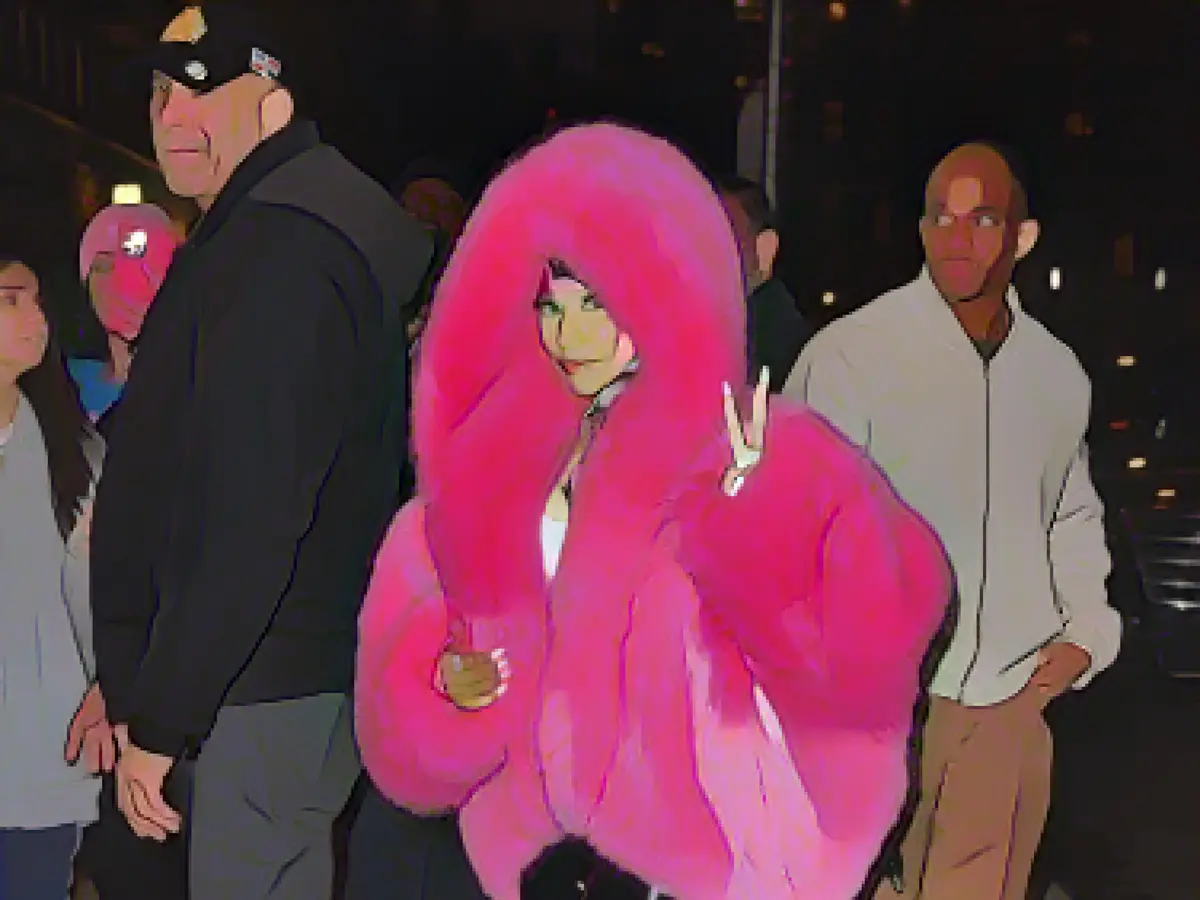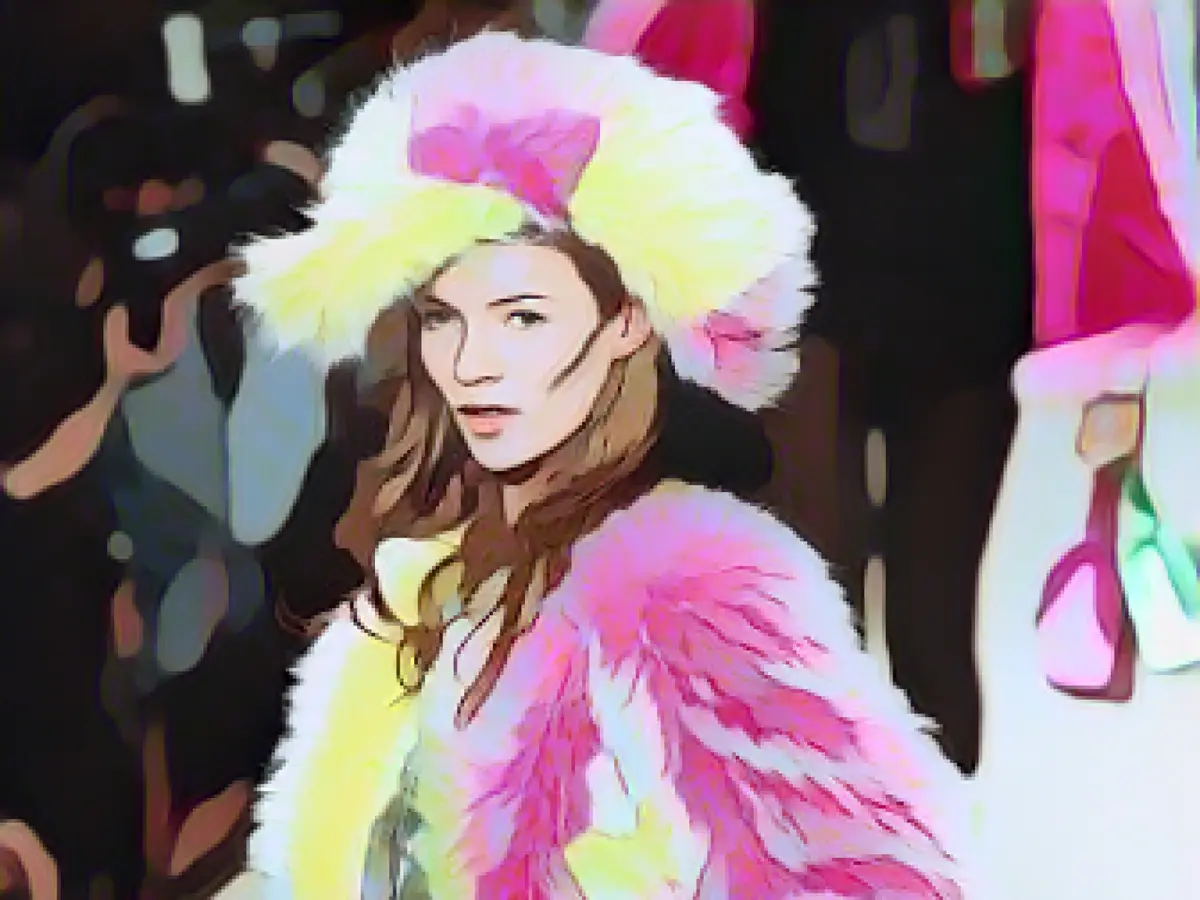Nicki Minaj's Neon Faux Fur Moment: A Modern Twist on a Classic Trend
Two jackets graced the stage during Minaj's New York City appearance, both made of a mix of synthetic fibers - Modacryl and Polyester. Alexandre Vauthier, a French fashion designer, gave his seal of approval to these creations. In recent weeks, these neon faux fur pieces have been showcased by Hunter Schafer and Kylie Minogue.

Once upon a time, real fur was a status symbol. In 1929, Vogue joked that the fur one wore revealed, "what kind of woman you are and what kind of life you lead." Fast forward nearly a century, and the ethical considerations of using real fur have entirely changed the game. Frequent PETA (People for the Ethical Treatment of Animals) campaigns, along with a plethora of red dye, have essentially eradicated the appeal of real fur in the luxury fashion industry. Even Kering, the parent company of high-end brands like Gucci, Yves Saint Laurent, Balenciaga, and Bottega Veneta, declared a pelts-free future in 2022.
Despite progress, making synthetic alternatives appealing remains a challenge. Only last week, Cardi B tried her hand at wearing a brilliant blue faux fur coat during Balenciaga's Pre-Fall show in Los Angeles.
Faux fur has been an attractive alternative for over a century, although it was a material of choice for the rich and famous that even the early 1920s Vogue readers likely never imagined. In the 1900s, fleeces were woven using the same spinning technique used to create cord and velvet, eventually becoming a more affordable and attractive alternative to animal pelts. Some factories in the 20th century were so inundated with orders that they had to temporarily halt production.

In the 1950s, polymers revolutionized the textile industry, creating more sophisticated and convincing textiles. Bold, unnatural colors hit the market – even a 1957 Vogue catalog showcased a woman wearing a pink jacket with a shaggy, "hairy" upper part. Like real fur, faux fur is less about the animal and more about artistic interpretation.
Karl Lagerfeld's chic Haute Couture fall/winter collection in 1994 for Chanel, which included fake fur, introduced faux fur to the world of luxury design. Live models paraded high-heeled ski boots with furry workman's caps and short jackets in hues of pink, yellow, and green. "Karl Lagerfeld defines chic, but with faux fur, one can pretend to be chic," the Vogue show report noted.

Fast forward to 2015, and faux fur reigns supreme in the fashion world. Dries Van Noten and Stella McCartney released collections filled with luxurious Modacryl and silk designs similarly to Cardi B's bright blue Balenciaga number. "We love the faux fur look because it's playful and fun," commented French designer Julie de Libran in 2015. "It offers incredible colors and volumes that can't be achieved with real fur."
While the environmental impacts of faux fur continue to divide opinions, one thing is certain – faux fur can't be faked when it comes to style. Minaj combined her pink faux fur jacket with matching, real fur stilettos in a playful nod to the current fashion scene.
Related Articles:
Fashion evolution doesn't rest on its laurels, and faux fur holds a unique place in that movement. Designers like Cardi B, Dries Van Noten, Stella McCartney, and Karl Lagerfeld push the boundaries of what's possible with synthetic materials, each adding a new aspect to the rich history of faux fur's importance in the fashion industry.
Sources:
Although real fur once held a place of high esteem, the advent of synthetic alternatives like faux fur has made it possible for fashion enthusiasts to express themselves with luxury, style, and cruelty-free choices. Designers like Cardi B and Karl Lagerfeld have pushed the envelope, incorporating these luxury synthetics into their collections, respectively, making faux fur a true trendsetter in the fashion world.








